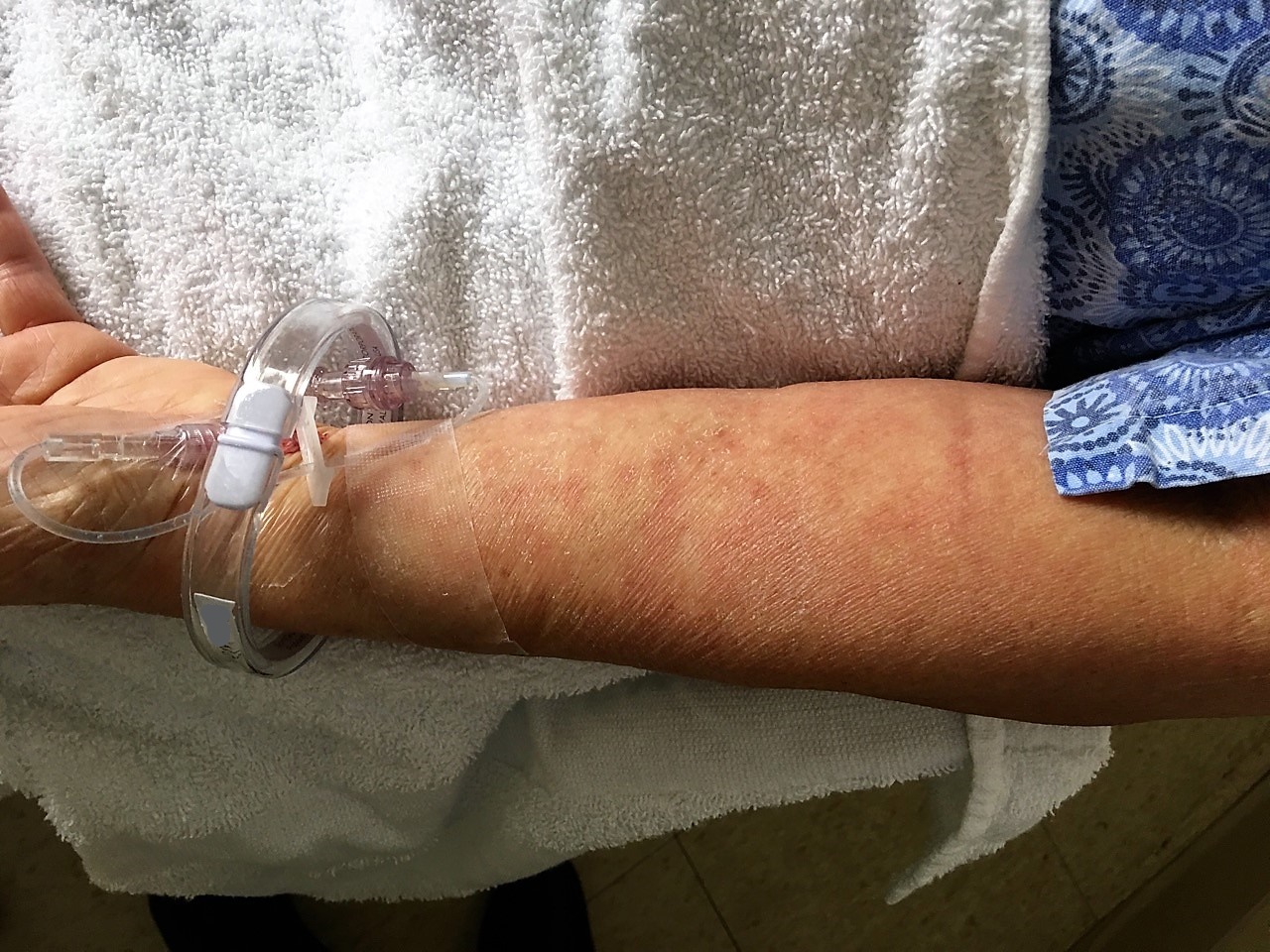Case Presentation: 66 yr old female presented to hospital with a 2 days hx of fever to 102.6F and bilateral pruritic forearm rash. 4 weeks prior she was diagnosed with MSSA bacteremia and acute heart failure secondary to infective endocarditis. Treatment at that time included a bioprosthetic aortic valve replacement and MV annuloplasty and course of nafcillin 2g q4 hr for total 6 weeks. On evaluation, vital signs were T 100.9 F, BP 110/60mmHg HR 134 bpm RR 18 and SpO2 97% on room air. Physical exam was significant for a blanching patchy erythematous rash of upper limbs without palmar involvement. Initial work up showed WBC 0.51 K/uL with 5.9% neutrophils and ANC 0.03 K/uL. In the absence of any source of infection and a negative work up for other causes of neutropenia, she was diagnosed with febrile neutropenia secondary to nafcillin. Nafcillin was switched to Cefepime and the WBC started to rise within 2-3 days. She received G-CSF on day 5 which elicited a leukocytosis.
Discussion: Severe neutropenia is a known side effect of many of the semi synthetic penicillins, mainly methicillin. Few cases of nafcillin induced neutropenia have been reported. Two predominant mechanisms of penicillin induced neutropenia have been hypothesized: toxic suppression of neutrophil formation or immune destruction of mature cells and both have been supported in prior studies. The consensus is a dose dependent relationship. An immune-mediated reaction would also account for the rash and fever that can be seen in these patients [2]. β-lactam induced neutropenia usually occurs after 3 weeks of treatment on average as was seen in this case. G-CSF therapy may hasten neutrophil recovery however there are currently no specific guidelines for its use and rebound leukocytosis is a common occurrence. This type of drug reaction does not constitute a true drug allergy and most patients can be re-treated with penicillins later with no adverse reactions but close monitoring is advised.
Conclusions: For patients on long term β-lactam antibiotics regular monitoring of the CBC should be done to allow for early intervention in the event of a declining WBC count.

